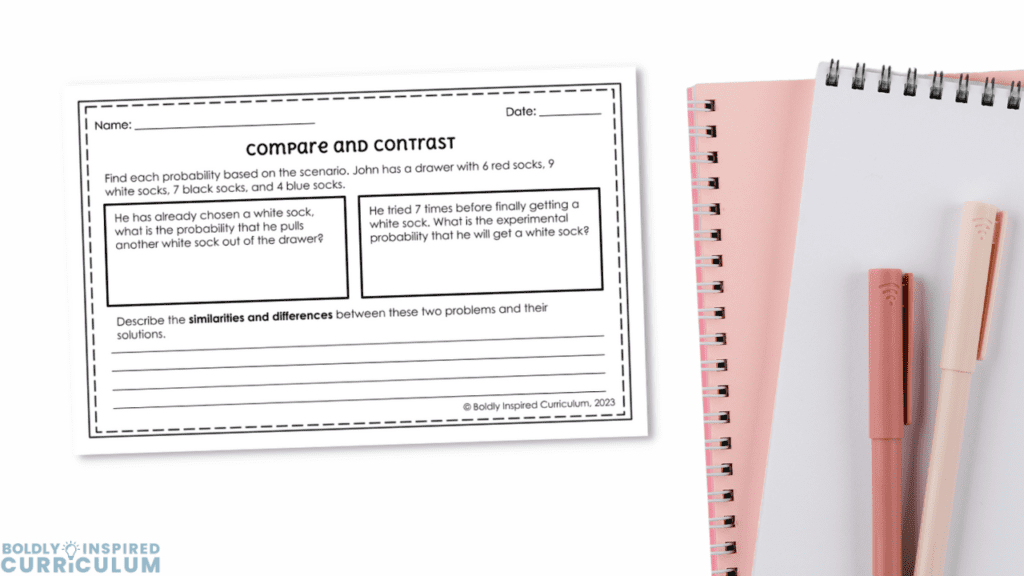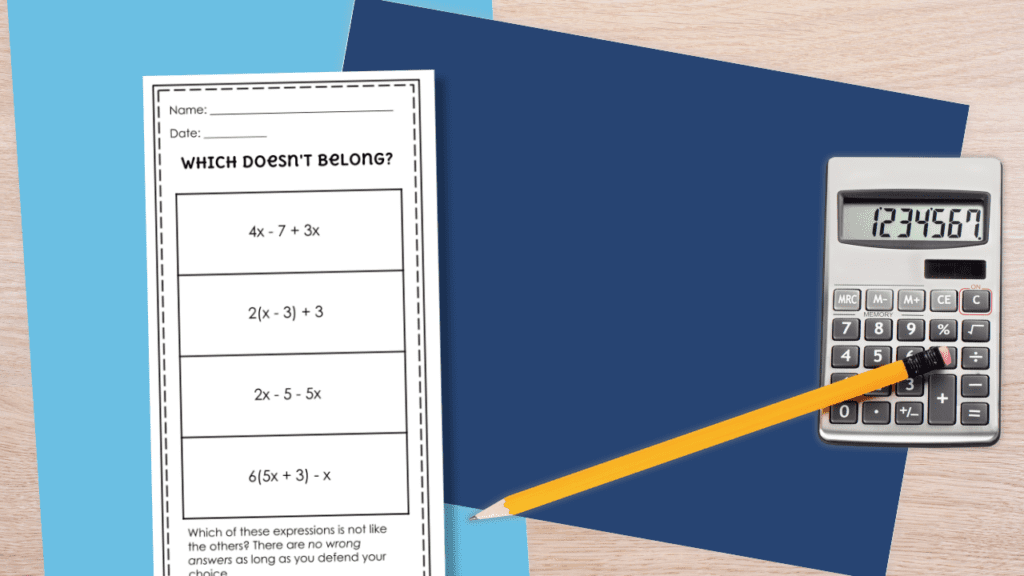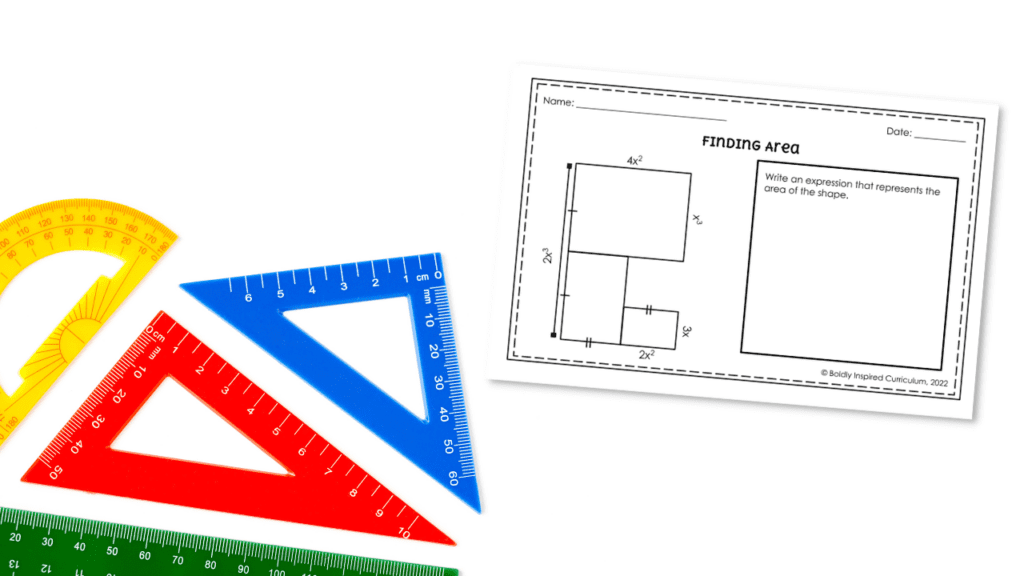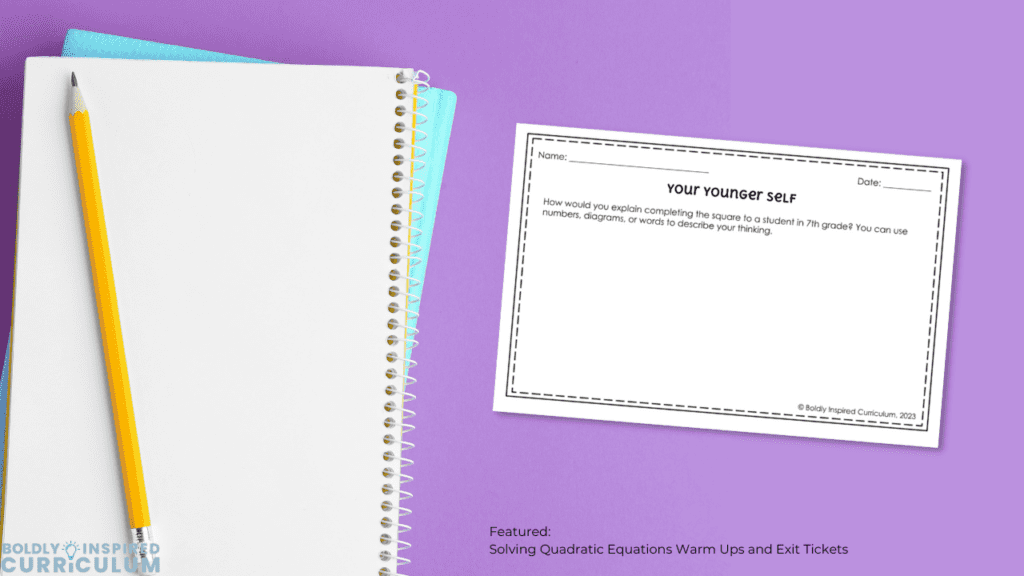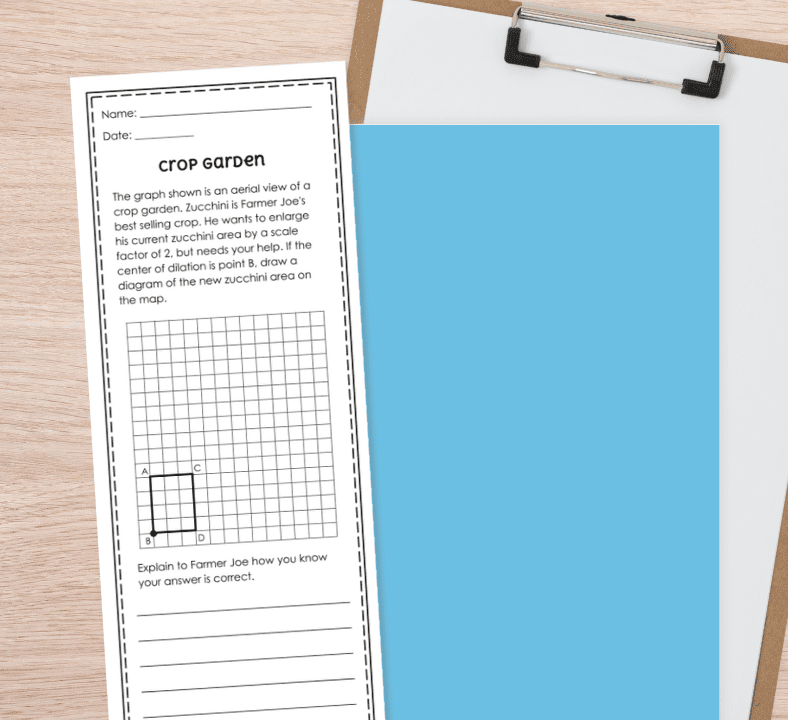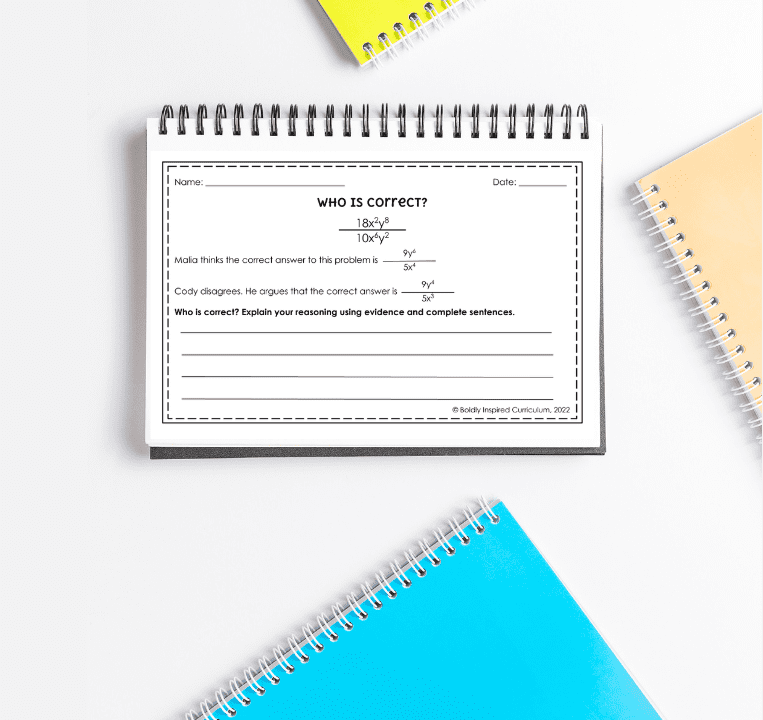Math writing prompts are a great way to encourage students to think critically about mathematics and to develop their communication skills. They can also be used to assess students’ understanding of concepts and procedures.
Table of Contents
ToggleHow to introduce writing in your math classroom
Group discussions are a great way to introduce math writing prompts in your classroom. In small groups, your students are able to solve problems together and discuss different problem solving strategies.
The first step to writing is talking through a problem and solidifying an answer before fully committing to writing. Having to write down an answer is a lot of commitment for some students and if they are unsure about their answer talking through it with others can be a huge help.
I have found that using mini whiteboards (or even having groups work at the large whiteboards) encourages them to lean into their mistakes and try multiple strategies before committing to one. Once they feel confident about their answer, they can move on to figuring out how to take their thoughts and put them into words that justify their solution.
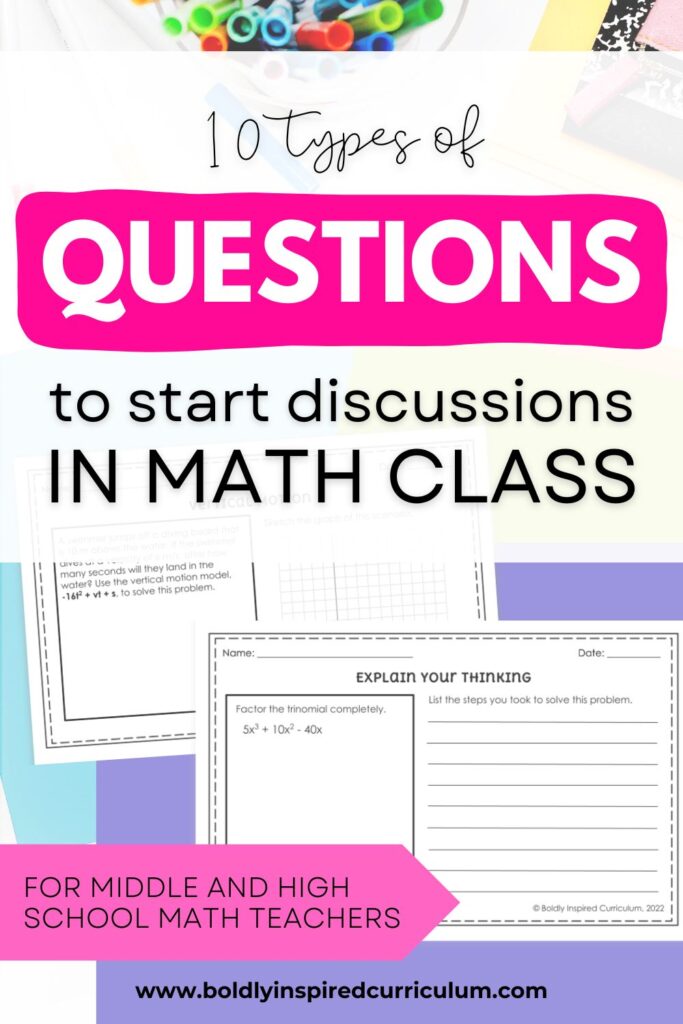
Types of Math Writing Prompts to Use in Your Classroom Tomorrow
It’s important to ease into using writing prompts in your math classroom. I’m going to compare the types of questions to salsa levels rather than ability levels. I’ve found that the different types of questions don’t necessarily equate to ability levels but rather the amount of critical thinking that you’re asking your students to do.
This list of examples of math writing prompts starts with mild difficulty and progresses to spicy.
Mild
Compare & Contrast
With compare and contrast questions, students are simply listing out similarities and differences of two problems or solutions. They don’t necessarily have to come up with a solution right away.
As your students get more comfortable with math writing prompts, you can increase the difficulty of the problem. This ultimately provides more opportunities for your students to demonstrate critical thinking.
Which Doesn't Belong?
The great thing about which doesn’t belong questions is that there is no right answer. This keeps the activity super low stakes for your students and just gets them thinking about seeing multiple perspectives and how to defend their answers. At the end of the discussion, you can also ask if anyone changed their mind and why.
Estimation
Estimation is a common question that all of your students should have seen at some point in their schooling. They know that their answer might not be correct, but they can still explain how they got their answer and why they think it is close to the correct answer.
Think, pair, share
Think fair share is an easy place to start because you can use this strategy with any of your regular warm-ups and have your students talk about their solutions with a partner. Getting your students talking about math leads seamlessly into writing about math.
Medium
Prediction
Predicting is the first type of writing prompt in the medium category because it’s asking your students to take background information and skills that they already have and make predictions about a problem and its solution. There may or may not be a right answer for prediction problems but like the other types of writing prompts the main goal of this type of question is to get your students thinking logically about the concept as a whole.
Problem Solving
A problem solving writing prompt could be a problem where there are multiple ways to get to the answer or it could model the problem in a different way. An example of a problem solving task would be using algebra tiles to model expressions. Then, your students would explain how the algebra tiles represent the problem and their solution.
Reflection Questions
Reflection questions are the easiest types of writing prompts to ask your students on the spot. it’s really just a matter of asking your students to either explain their thinking, ask how they got an answer, or why they know that their answer is correct.
Spicy
Error Analysis
Give students a mathematical statement or solution that contains an error and ask them to identify and explain the error.
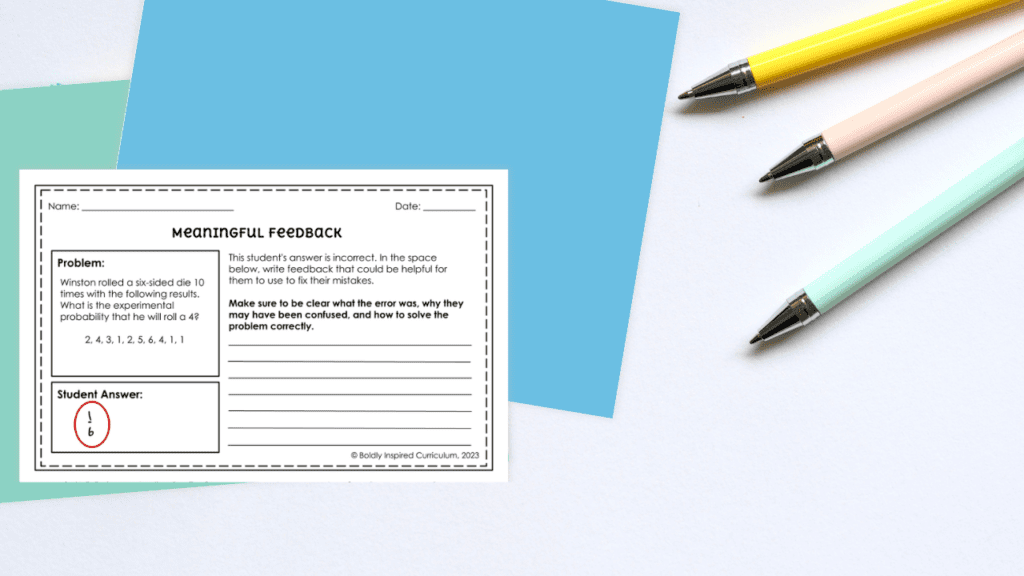
Real World Applications
Real world applications will always be my favorite type of writing prompt. They will get your students thinking outside of the box and allow them to easily expand on their answers through writing. Word problems are often challenging for students, so I definitely recommend working up to this type of question if you are asking them to write about their answer as well.
Who Is Correct?
These types of questions are similar to error analysis prompts except students will be given two options for possible solutions. They will then have to choose which student has the correct answer and explain why. The added step here is asking your students to explain how they know which answer is correct and to identify the mistake in the other answer.
Math writing prompts can be used in a variety of ways in the secondary math classroom. They can be used as warm-up activities, homework assignments, or assessment tools. They can also be used to encourage students to collaborate and to develop their critical thinking skills.

